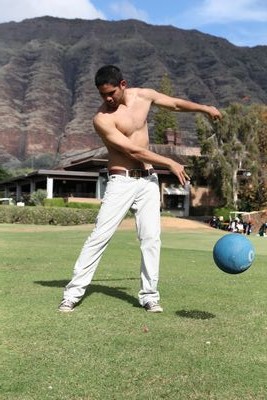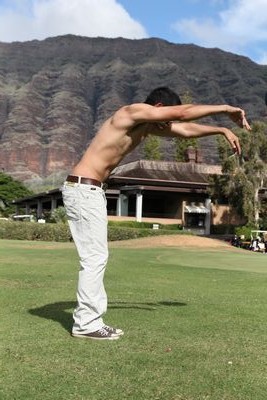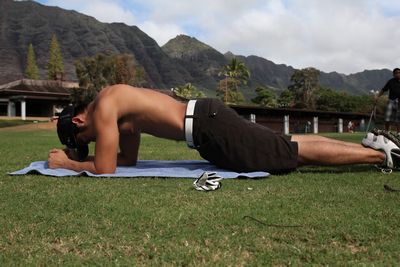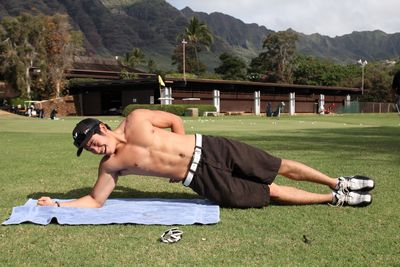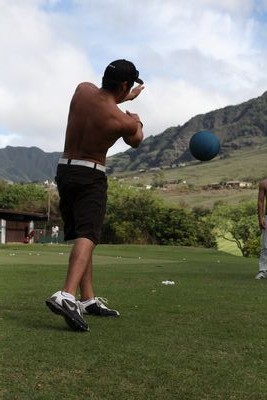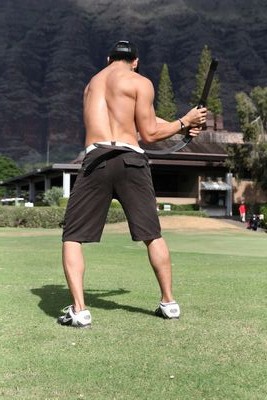Are AB Crunches Good For Your Golf Swing?
December 2010
- by Kelvin Miyahira
Are sit-ups good too? How about Russian twists? Or woodchops? Medicine ball throwdowns? All of these exercises will do wonders for creating that six-pack abs that we all want (I’ve given up on the six-pack and am going for the keg). And we’ve all been told to train our core if we’re going to improve our driving distance, create stability, and protect your spine from possible injury and more. With all those benefits, we should all be doing these exercises!
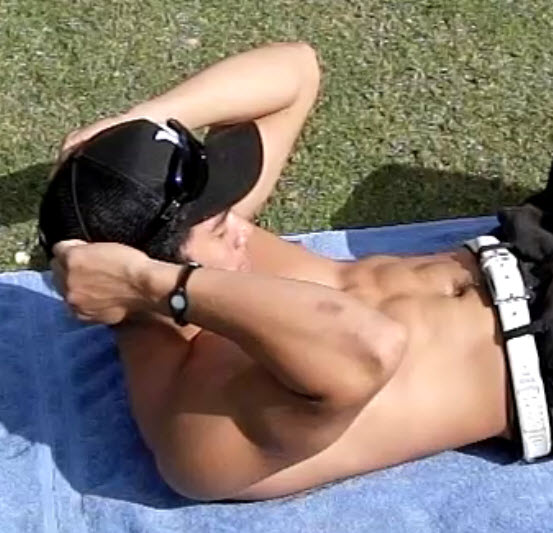
But before you go out and start getting abs like Keenan, we’ve got to look at how the abs should be working in the golf swing.
The Abdominal Muscles as Facilitators
Here’s Rickie Fowler with his incredible Gumby-like body. During transition, he starts to set his shoulder and elbow in place (lateral bend) and his abdominal muscles (rectus abdominis, transverses abdominis and obliques) facilitate this move. They do this by allowing the movements of the erector spinae, multifidus, latissimus dorsi, QL’s and rotator cuff muscles to perform their action first!
Next is Dustin Johnson.
Here’s Dustin Johnson from the back view. See his back muscles contract to get his body into position?
From the target line you can see that his abs facilitate the process by being relaxed enough to expand outward to allow the back muscles to dominate in the early stages of the downswing.
The Abdominal Muscles as Stabilizers
The other way of using your ab muscles (mainly your transversus abdominis) are as stabilizers. Once Rickie or Dustin set their shoulder and elbow in the slot (lateral bend), they use their abs to “lock” or stabilize the spine gears in place. Once this locking occurs, they can drive the spine engine with their lower spine, hips and legs.
If there is no abdominal stabilization, then there can be very little transfer of energy from the legs. Try this yourself. You can surely twist your lower body while relaxing all your ab muscles and it won’t move your upper body at all.
The Abdominal Muscles as Prime Movers
The internal and external oblique muscles are the only muscles of the abs anatomically aligned for prime mover rotation. Used properly, the obliques work with the back muscles to pull down and rotate the torso. The one danger is that if the back muscles aren’t doing their job, it is easy for the rectus abdominis to assist the obliques in doing an ab crunch early in the downswing that in turn causes swing errors as we shall see later.
Notice Blair’s obliques firing with his rectus abdominis in stabilization mode.
The Abdominal Muscles as the Trigger
As the rectus abdominis fires hard in this sequence before impact, their effect is to trigger the upper spine into faster rotation. The pelvis goes into posterior tilt and this is the mechanism that unlocks the spine gears to allow the upper body to get slung into action.
This is perhaps an instinctual move that needs no training except that for many golfers, this occurs way too early in the downswing as we shall see soon.
Abdomination in Swings
When your abs dominate the swing as prime movers, here’s what happens.
Here’s an amateur’s over the top swing that has ab crunch (rectus abdominis firing) written all over it. With none of his back muscles firing to balance the abs, the abs are pulling his upper body forward and toward the ball. With such dominance by the muscles on the front side of the body so early in the downswing, what chance does he have of getting his back muscles involved and getting his club on the right plane.
Also, the early ab crunch disconnects the upper and lower halves of his body so his legs aren’t even working in his swing.
Note: Dale has improved a lot so I’ll update his progress in a later article.
Notice the hard fire of the abs from the start of the downswing. This causes the early release of his hands/arms. It also causes his head to drop forward and down toward the ball. Contrast to Tiger’s drop which is down but not forward to the ball.
But you had better be extremely strong since his legs are not really contributing much to his swing. His swing is primarily driven by his upper body and arms.
Abdomination in Training
Maybe what’s missing is the big picture. We’re so inundated with the whole sexy ab idea that we’ve forgotten about training the other half of the core muscles…….the half that are on your back. Maybe no one has been complimented on their sexy erector spinae or multifidus muscles? There are even muscles of the pelvic floor that need attention but we’ll save that for a later article.
There could be another reason; there aren’t any good golf specific, functional exercises for the back muscles. Oh sure, there are supermans, balance drills, waiter bowing drills and more but these aren’t movements specific to the golf swing. These exercises may be muscle specific, but they surely aren’t movement specific.
The standard of specificity of any exercise is that it should reasonably mimic a correct golf swing pattern while targeting the muscles or muscle groups involved in the swing. Then, if resistance is added to the movements, that’s a huge bonus.
Training the Abs
Now that we have defined the rules of specificity, training the abdominals for stability will be pretty easy and less confusing. So let’s take a look at the common training methods to see if they pass the test of specificity.
Pulley or resistance band pulls
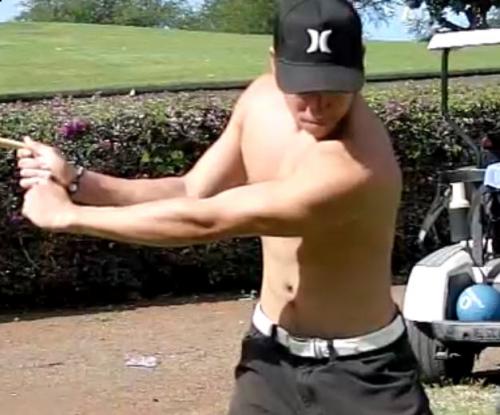
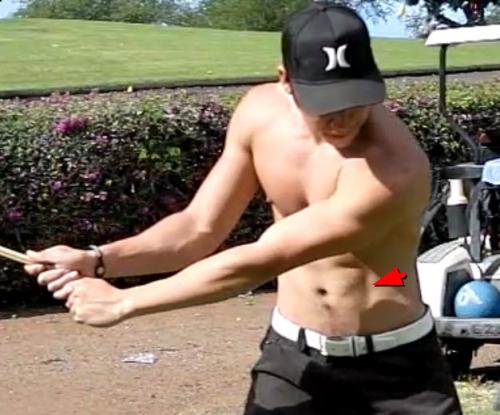
Nice ab crunch and pull from obliques but is there any training of the back muscles to get into position? Any lateral bend? So it’s another exercise that excludes the back muscles.
Balance pads

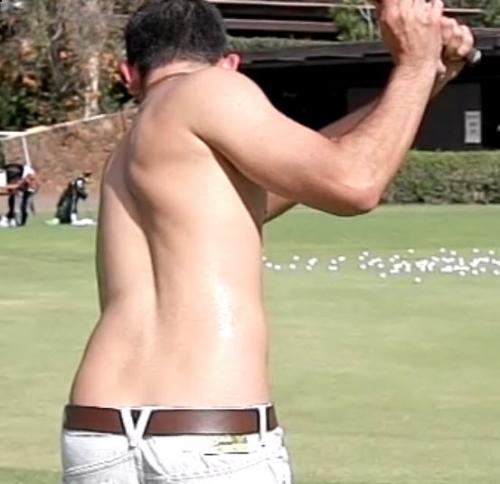
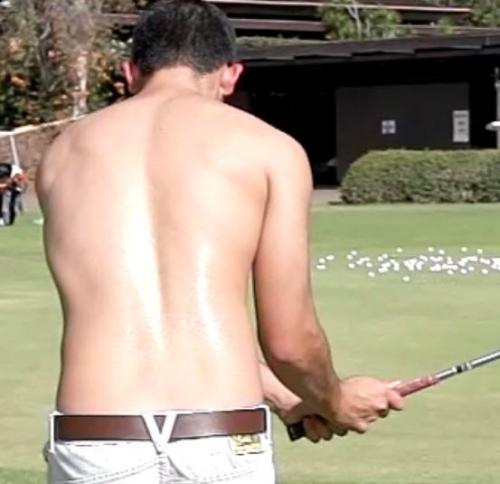
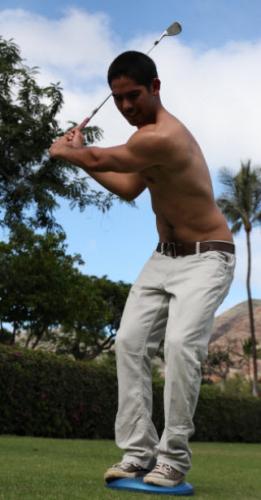
These are great for stability. The lower spine won’t move much but do you see the back muscles working to move into position? Don’t think so.

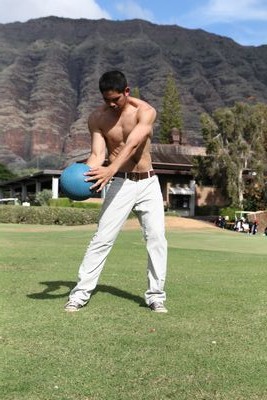
Medicine ball chops are good for training the abs but once again, not much for the back.
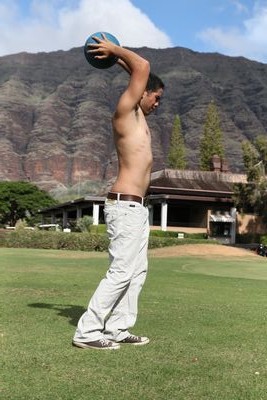
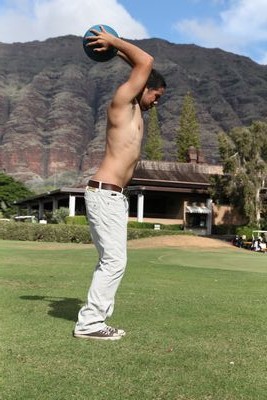
Overhead throwdowns are even worse. More rectus abdominis work without any setting of lateral bend.
Planks
Planks might be good for generic TVA strengthening, but not going to do much for getting the sequence of the TVA allowing lateral bend before stabilizing.
Russian twists

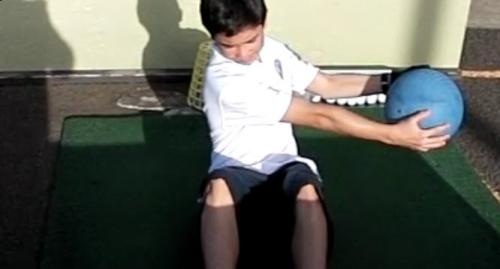
Russian twists train the lower spine to be totally stable while using a disconnected upper body to move the medicine ball.
Other exercises like the horse stance, cat position, bosu ball, swiss ball and more are wonderful exercises but do not train the core in a specific way given the movement patterns of the golf swing. Thus, these are exercises that might help you in other everyday life situations but don’t expect it to help your golf swing.
Correct Way to Train the Back and Abs
In order to train the back muscles, all you have to do is alter the traditional medicine ball tosses. Just do a backswing, get a bit of lateral bend, and then throw.
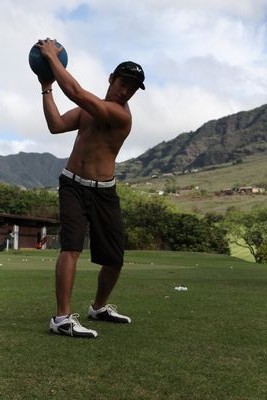
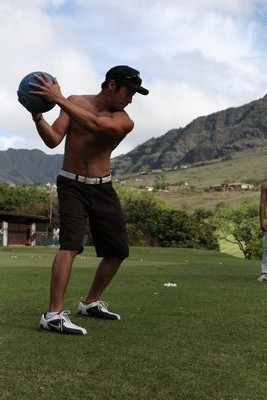
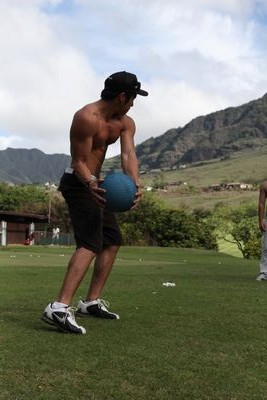
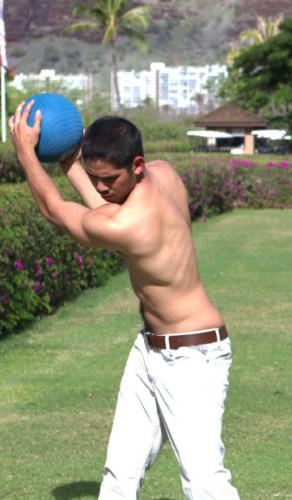
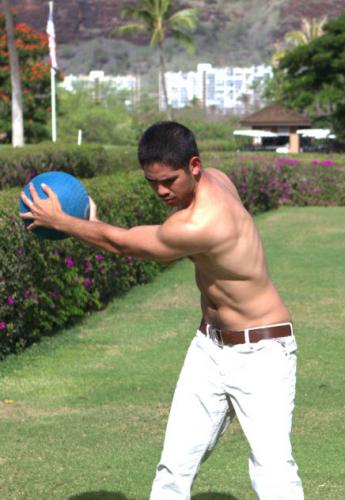
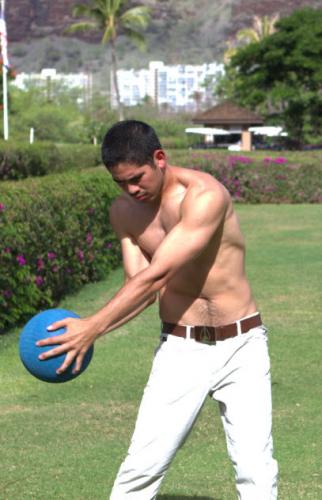
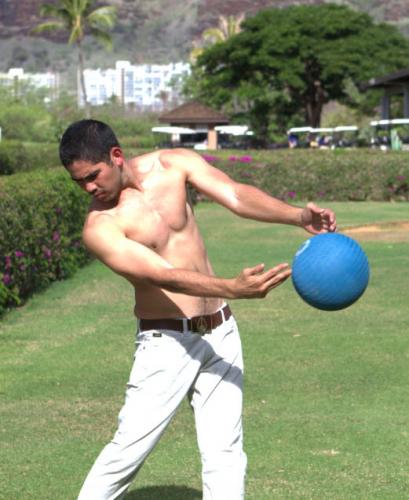
The key with these exercises is taking time in transition to get the shoulder and back muscles set before throwing. You can even add a little bit of a pause to ensure that you get the ball “in the slot” prior to accelerating.

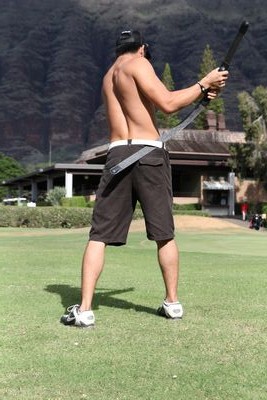
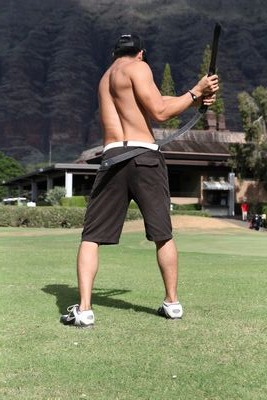
Here’s a sneak preview to a prototype of a bendable resistance device that I’m developing trains the back muscles to fire. This trains the back muscles, lats, rotator cuff muscles for external rotation of the shoulder, right bicep pull, stop sign move to resist clubface opening and trains the abs to wait before firing.
The bottom line is that we are in a world where the old “image is everything” mantra still rings true. Thus, having a nice set of six-pack abs counts just as much as how good you are. But if you want to play better golf, you really need to work on your back more than your front to balance your swing and have your abs learn to facilitate the back movements. And since most golfers struggle with issues related to not having enough lateral bending, this really makes sense to do. And hopefully one day, someone will compliment you on your nice erector spinae muscles.
